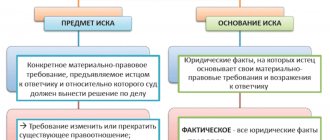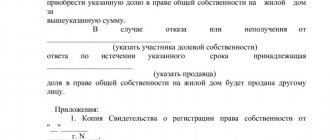All real estate is subject to registration in the state register. When a building is erected, a corresponding entry is made.
When the object ceases to exist, this entry must be excluded from the Cadastre.
In this article we will tell you how to remove a house from cadastral registration and what documents are required for this.
Reasons for deregistration
Russian legislation provides several grounds for removing a house from cadastral registration:
- Demolition of a building, i.e. the building was destroyed by the decision of the owner or as a result of circumstances beyond the control of people (flood, hurricane, earthquake, fire and other natural disasters).
- The owner provided false information about the building or forged documents.
- Additional construction work (not reconstruction) is planned. For example, expanding the area of the house or changing the parameters indicated in the extract from the state cadastre.
- Association of buildings. In this case, the need for demolition arises if the owner wants to combine buildings under one roof or a common foundation.
- Dividing one building into several buildings. Subsequently, new buildings must be registered separately.
- Lack of state registration of rights. In this case, the temporary property is deregistered at the request of the candidate owner.
Buildings that were temporarily registered before January 1, 2017, in the absence of a registered ownership right, are automatically deregistered after March 1, 2022.
Houses that were destroyed during natural disasters are deregistered on the basis of an inspection report by a special commission in which cadastre authorities participate. This act must indicate the reason for the destruction.
What documents are needed to delete a registration?
To successfully deregister an object, a package of documents is required. They must be transferred to the city or district branch of the cadastre.
List of required documents:
- statement;
- an inspection report signed by a cadastral engineer confirming that the building no longer exists;
- passport, if the application is submitted by the owner;
- notarized power of attorney with a representative;
- title documents for the object;
- a court decision when deregistering a house through the court.
Methods for deregistration of a building
To delete a registration entry in the registry, you must first collect the above package of documents.
They can be submitted in several ways:
- When visiting Rosreestr in person . In order not to waste time waiting for your turn, it is recommended to make an appointment on the federal service website.
- On the Rosreestr website . This option is considered the fastest and most convenient, since everything can be done right from home. But with this option, a mandatory condition is the presence of an electronic signature. It can be issued in specialized structures.
- At the MFC.
- By registered mail through the post office . The documents must first be certified by a notary. A prerequisite is notification of receipt of the letter.
The best option is considered to be remote submission of documents through the Rosreestr website. It not only saves time, but also allows you to monitor the progress of reviewing papers.
Any thing can sooner or later become unusable and cease to exist. Real estate properties are no exception in this regard - they can just as easily become dilapidated and destroyed.
Often there is a situation when the owner himself decides to liquidate real estate, which loses its functional purpose or for some other reason ceases to suit him. According to Russian legislation, the death or destruction of property serves as grounds for termination of ownership rights to it (Clause 1, Article 235 of the Civil Code of the Russian Federation; hereinafter referred to as the Civil Code of the Russian Federation). However, termination of ownership of the property in such a situation does not occur automatically. This means that, despite the actual cessation of the existence of the object, it will be listed in the Unified State Register of Real Estate (USRN) until the record of ownership is terminated and removed from the cadastral register. How to proceed in order to “get rid” of the rights to a non-existent property as soon as possible? 1. Demolition and destruction of a real estate object: basic concepts Demolition of a capital construction object means the liquidation of a capital construction object by its destruction (except for destruction due to natural phenomena or illegal actions of third parties), dismantling and (or) dismantling of a capital construction object or its parts ( clause 14.4 of article 1 of the Civil Code of the Russian Federation). The grounds for demolition may be: - decision of the owner of the object; — developer’s decision; — decisions of a court or local government body (in cases provided for by federal laws). The decision to demolish can be made for the following reasons: - the need to build a new property on the site of the demolished one; — significant physical wear and tear and dilapidation of the property, which does not allow its further full use. All of the above allows us to interpret the concept of demolition, formulated in the Civil Code of the Russian Federation, as conscious actions of the owner of a property aimed at ending its existence. Since the procedure for demolishing a property is regulated by the Civil Code of the Russian Federation, take seriously compliance with all procedural issues. Accordingly, in contrast to demolition, the destruction of a real estate property is considered to be its destruction or loss of integrity and functionality, regardless of the will of the owner, due to natural phenomena, emergency situations or illegal actions of third parties. If the degree of destruction of the property allows for reconstruction (restoration) measures to be carried out, the owner may decide to restore the property, for which permission must be obtained from the local government for reconstruction (with the exception of real estate, the construction of which does not require a permit, as well as in respect of which a notification procedure applies). If the object is completely destroyed, the owner, in order to remove it from cadastral registration and terminate ownership rights, must take a number of actions, some of which are similar to actions in the case of demolition of the property. 2. Rules for demolition of real estate 2.1. Preparatory stage of work on the demolition of a property If you have decided to demolish a property, then you need to contact a specialized organization to prepare a project for organizing work on the demolition of a property (Part 1, Article 55.31 of the Civil Code of the Russian Federation). The contractor responsible for preparing the project must be included in the national register of specialists in the field of architectural and construction design. Before demolition work is carried out, it is necessary to notify the municipality of the planned demolition of the property no later than 7 working days before the start of the work. The notification form was approved by order of the Ministry of Construction of the Russian Federation dated January 24, 2019 No. 34/rp “On approval of forms of notification of the planned demolition of a capital construction project and notification of completion of the demolition of a capital construction project.” The notification is submitted on paper to the municipality at the location of the property. As a general rule, the notification must be accompanied by a project for organizing the demolition work, as well as the results and materials of the site survey, on the basis of which such a project was prepared (Clause 10, Article 55.31 of the Civil Code of the Russian Federation). In the same way, no later than 7 working days after the completion of the demolition of the property, it is necessary to submit a notification to the municipality about the completion of the demolition of the property. 2.2. Demolition of a real estate property Before starting demolition work, you need to obtain from the organizations that operate the engineering and technical support networks at the location of the property, the conditions for disconnecting the capital construction project from the engineering and technical support networks. In accordance with the issued conditions, you will be required to disconnect your facility from utility networks. 3. How to remove a demolished or destroyed property from cadastral registration and terminate the right to it? Removal from the state cadastral register of a demolished or destroyed property and termination of rights to it is carried out at the request of the owner or a person authorized by him on the basis of an inspection report (Article 23 of the Federal Law of July 13, 2015 No. 218-FZ “On State Registration of Real Estate”) , confirming the termination of the existence of the property. To prepare such an inspection report, you must contact a cadastral engineer. To submit an application to Rosreestr for removal from the state cadastral register and for state registration of termination of the right to a property, you can contact any division of the MFC “My Documents”. You must have a passport or other document proving the identity of the applicant. An inspection report must be attached to the application. You can also submit documents electronically on the official website of Rosreestr (www.rosreestr.ru) or a single portal of state and municipal authorities (www.gosuslugi.ru). No state fee is charged for the removal of a demolished or destroyed property from the state cadastral register and for the state registration of termination of ownership rights in connection with the cessation of the existence of the property.
How to remove a destroyed house from cadastral registration
To remove a burnt or destroyed house from the registration register, a building inspection report is required . This procedure is carried out by the cadastre authorities. When contacting this organization, you should enter into an agreement with a specialist.
But before signing it, it is recommended to check that the engineer has a certificate giving the right to inspect the buildings and draw up the relevant acts. You can check the employee on the Rosreestr website.
After signing the agreement, the engineer must come to the site where the remains of the house are located. After the inspection, the specialist issues a report, which must indicate the reason for deleting the registration record. Next, this document is submitted to the Registration Chamber in any convenient way.
The decision on the application is issued within the prescribed period:
- 5 working days – through Rosreest (personal application or remote submission via the Internet);
- 7 working days – through the MFC.
If the decision is positive, the applicant is issued an extract confirming the removal of the building from the cadastral register. The document can be delivered to the applicant in person, through a representative or by post.
What is the price
This service is provided free of charge, without paying state duty. But this applies only to the above organizations.
When contacting third-party institutions, a fee may be charged, so it is worth clarifying this point in advance.
Stages of project implementation by our cadastral engineer
Stage 1
We advise the Customer and prepare a starting package of documents necessary for preparing a technical plan.
Stage 2
We agree and sign a contract for cadastral work
Stage 3
We inspect the property and record all necessary information about it upon inspection
Stage 4
We create a Property Inspection Report
Stage 5
We submit the Property Inspection Report for consideration to Rosreestr and seek their decision on state cadastral registration
Reasons for refusal
Before removing a demolished house from the cadastral register, you need to familiarize yourself with the possible reasons for the refusal.
Authorized bodies may refuse to delete a registration entry under the following circumstances:
- The building inspection report was signed by an unauthorized person or a specialist without the appropriate certificate.
- Among the submitted documents there is no inspection report of the object.
- Inconsistency of the act, i.e. it is issued to another object.
- There are errors in the application.
- The applicant does not have the right to submit an application to deregister an object, i.e. he is not its owner.
Under these circumstances, the process of deregistering the building is suspended until all comments are eliminated . A new application is then submitted. If the data in it corresponds to the information in the inspection report, then a second visit to the site by the engineer is not required.
How to keep track of costs for construction in progress
Correctly maintaining records of work in progress is important for any company. In the future, this can directly affect financial results.
In order to correctly reflect construction in progress, the construction company must approve in its accounting:
- List of cost items associated with production
- The method by which general and production expenses are allocated
- Accounting method (custom or method of accumulating expenses)
- Method by which general business expenses are written off
- Method of introducing costs with the cost of work
- Method for assessing construction in progress
Accounting for production costs where construction and installation work is carried out can be organized in two ways:
- according to custom method
This is the main method in which the accounting object is a separate order, which is opened for each production facility in accordance with the contract. In this case, accounting of costs, income and financial results is carried out separately for each executed agreement.
- according to the method of accumulating expenses for a specific period of time
In this case, the initial cost of the work is determined by calculation, based on a percentage calculated as the ratio of the actual costs of construction of work in progress to their contract value.
The BIT.CONSTRUCTION/Contractor solution allows you to carry out an inventory of work in progress with detail down to cost items and the ability to indicate the percentage of work in progress. Part of the costs of the current period can be taken into account in the cost price, and the remaining part can be transferred to the next period. A special document “Inventory of work in progress” is used for this purpose.
Let's consider a situation where it is necessary to reflect the partial closure of account 20 and leave part of the costs in work in progress.
In October, work on the Radost TC facility was actually completed (material costs for production) for 800,000 rubles. Also, wages were calculated and corresponding accruals were made to the funds. We will postpone some of the completed work to November. To do this, we will use the “Production” – “WIP Inventory” tab.
To reflect the inventory, it is necessary to create and post a corresponding document. We select the date at the end of the period when all work has been completed (for example, 10/31), and a time equal to the last second of the reporting period.
You can transfer “work in progress” by indicating the amount, percentage of completed work, or both, with details by cost items and contractors. Accounting can be done both for your own (account 20.01) and for subcontracted work (account 20.05).
Click “Fill” and automatically receive the amounts as in the statement. We will take into account wages and other accruals in full in October, and we will take into account the work partially, indicating the amount (for example, 300,000) that we want to take into account in November. We indicate the amount in Accounting and Tax Accounting. We carry out the document.
Please note that only those amounts that remain for the next period remain in the document.
After closing the month, the balance sheet will look like this. Labor costs were fully accounted for in October, and of the work performed, 500,000 were carried forward to the next month. In the calculation certificate for the cost of production for October, we see the expenses of the main production and the amount of the balance of work in progress.
If you also want to implement automation of accounting and tax accounting for a construction company, leave a request for free demo access to the BIT.CONSTRUCTION system.
Peculiarities
The process of removing a building from cadastral registration depends on the category of the house:
- Burnt building . A fire in a house is possible for various reasons - arson, accident, short circuit, etc. You cannot build a new house on the site of a burnt one, and then present it as a rebuilding or reconstruction. A burned house must be deregistered. And only after deleting the registration record can new housing be built.
- Destroyed house . In such a situation, the owner can deregister the object or restore it. In most cases, they resort to the first option. But before submitting an application, the destroyed building must be completely demolished. Then you can invite an engineer to draw up an inspection report.
- Apartment building . The decision to restore or remove a house from cadastral registration is made only by an engineer with the appropriate license.
What applies to construction work in progress?
Unfinished construction work represents expenses and work on unfinished real estate from the very beginning to delivery, which are the object of accounting for construction in progress and which cannot be depreciated. These include uncommissioned structures, buildings, and individual stages of construction and installation work.
Unfinished construction can be divided into the following groups:
- objects that are in the process of construction and for which documents for acceptance into operation have not been drawn up;
- where construction has been temporarily stopped;
- mothballed construction with unfinished work;
- where all work has stopped.
This is a list of cost items that are associated with the performance of work and which can be classified as production expenses:
- Materials
- Equipment, machinery and its installation
- Production, construction, installation work
- Salary
- Tools, necessary equipment
- Electricity and other resources










